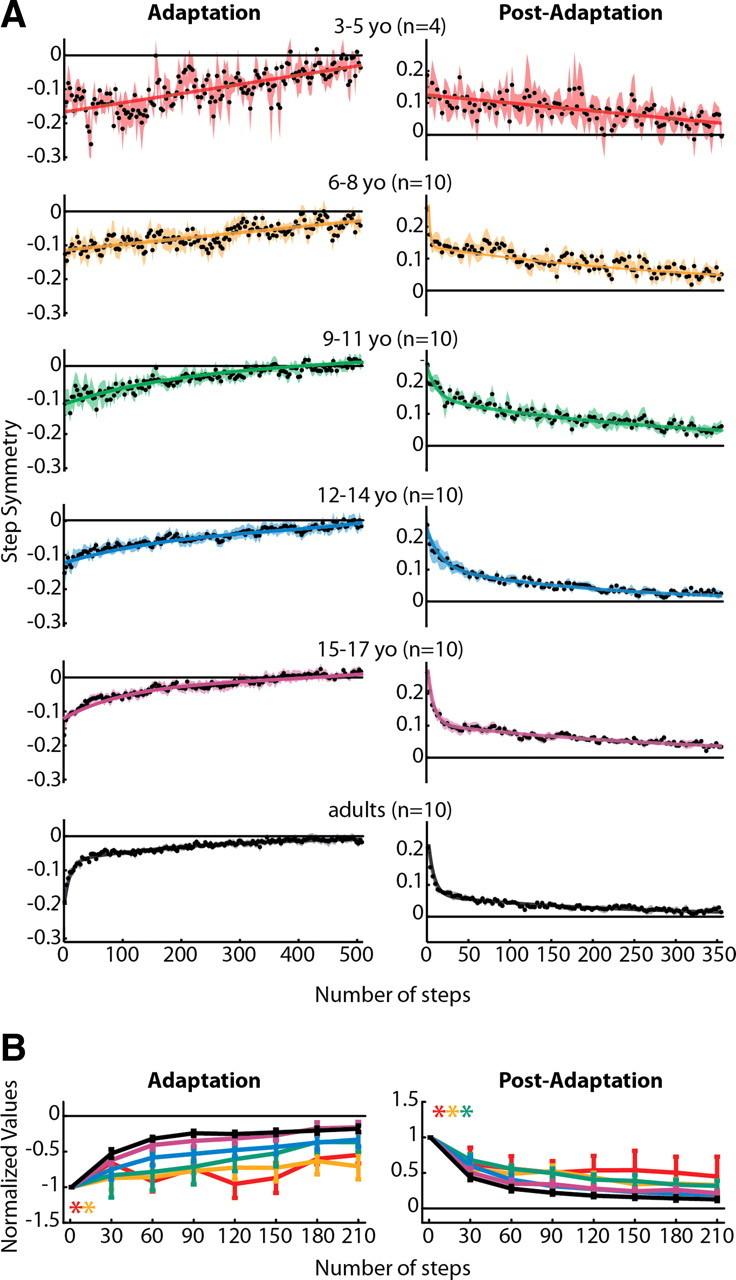Figure 4.

A, Averaged step symmetry adaptation (left column) and post-adaptation (right column) data for all subjects who showed significant aftereffects within each age group. Data were fit with linear, single-exponential, and double-exponential functions, and the one that resulted in the best fit (highest adjusted r2) is shown (all r2 values are listed in Table 3). Linear functions resulted in the best fit for 3–5 yo adaptation and post-adaptation and 6–8 yo adaptation. Double-exponential functions resulted in the best fit for all remaining data. B, Comparison of step symmetry adaptation and post-adaptation rates across all age groups. Means ± SE are shown for adaptation (left) and post-adaptation (right). Significant main effects for age were found for step symmetry adaptation and post-adaptation. Post hoc analyses were performed on the significant main effect for age, and age groups that were found to be significantly different from adults are shown by colored asterisks.
